The dam is full of azolla – a little water weed that I encourage because it is symbiotic with a nitrogen fixing bacteria. Like legumes, it can grab nitrogen out of the air and stabilize it in a form that feeds soil and plants that are not so handily endowed with an in-built fertilizer factory.
My partner, who is a bit more enthusiastic about cold water than I am, decided that collecting it was a good excuse for a swim. In a few minutes with a little swimming pool net he had scooped up several feed bags full of it (still leaving plenty for this little frog to live in).
So of course with this supply, it had to be a compost making morning.
I don’t make a lot of compost – most of my soil building is done in-situ. But three or four times a year, I decide it is worth the effort to create a batch of high-value plant food mostly used for raising seedlings. I have written an item before about the theory behind compost making, and it really helps avoid failures if you get the idea behind the system.
Here’s today’s method for applying the theory:
Pick a spot with some stubborn weeds that need to be cleared. Good compost composts the weeds growing under a pile – too good an opportunity for weeding without digging to waste.
Line up five or six feed bags full of something that has a very high level of nitrogen, in this case, azolla. Other options though include horse, cow or goat manure or a green legume.
Do a couple of hour-long sessions of mowing mediation to get two ute-loads of mulch. I have a nice bit of community centre lawn that I like to mow because it has a good variety of soft meadow weeds in the grass, and some big angophoras (apple gums) that tend to drop lots of nutrient rich leaves. So my mowing yields mulch with a good variety of nutrients and a good carbon to nitrogen ratio, (as well as a nice big lawn area for cricket games).
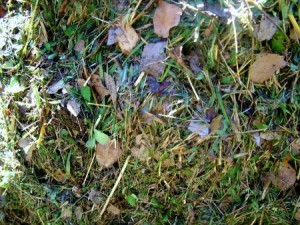 Mix the lot together either in layers or randomly, wetting as you go to give a texture like a wet sponge. That is, it should be moist enough for the aerobic bacteria that will do the compost making to really enjoy the environment, but not drown. Think air-breathing life form with no skin.
Mix the lot together either in layers or randomly, wetting as you go to give a texture like a wet sponge. That is, it should be moist enough for the aerobic bacteria that will do the compost making to really enjoy the environment, but not drown. Think air-breathing life form with no skin.
Wait for the pile to heat up to a temperature too hot to comfortably leave your hand inside it. In something like a week to a fortnight’s time, when the pile has peaked in temperature and has started to cool down again, use a pitchfork to turn the pile, turning the outside to the middle and wetting it down again as you go. You may have to do this more than once, depending on the weather and just how nice a breeding environment you have provided for the compost bacteria.
Within a few weeks you will have a pile of lovely stuff like this:
Expensive in labour, but oh so worth it!
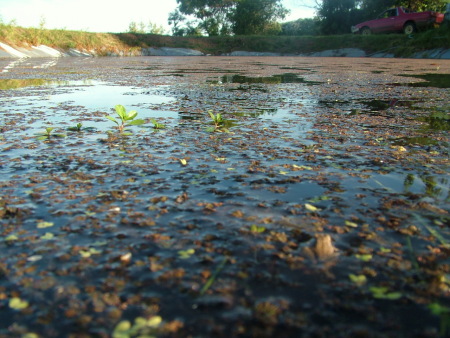
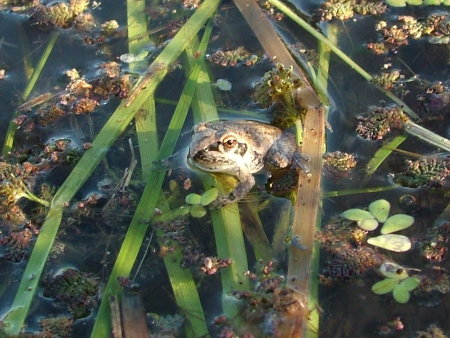
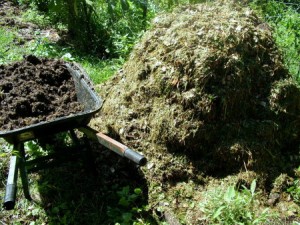

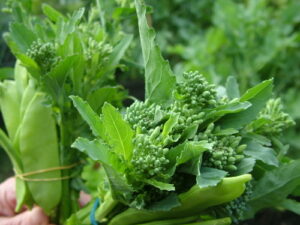
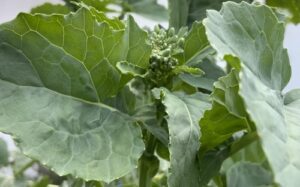
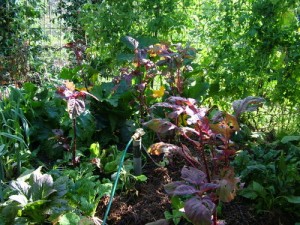
Hi Linda. I have come across the amazing benefits of azolla as you have described. My question is (and the reason I haven’t introduced it into my dam) is whether it is “weedy” when it gets into natural waterways. Our dam overflows into a bog that then drains into a creek. I already have some azolla in a pot and would love to put it into the dam so as to harvest quantities of it for composting. Cheers, Ying
Hi Ying, azolla is a good guy. It’s a native, so it will already be in the natural waterways, and it does a pretty good job of soaking up phosphates and other nutrients that leach in from water soluble garden and farm fertilizers. There’s a good fact sheet about it here: http://www.goldcoast.qld.gov.au/attachment/azolla_fact_sheet.pdf .
Pingback:True Love is a Pile of Compost
Love your dam! Our azolla is covering our pond now, although somewhat brown after our horrendous summer. We too use it to feed the chooks and composting.
Pingback:Fruiting Planting Days in Mid Spring – A Big Planting Day
Pingback:Azolla for the Chooks
Pingback:Planting in Early Winter